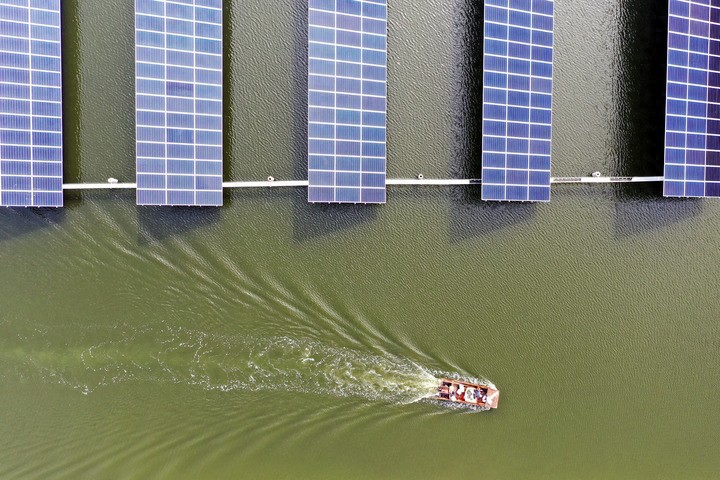Reference News Network, July 25 report. According to an article published on the website of France's Le Monde on July 13, written by journalist Jordan Puy from Tianjin, titled "In China's Binhai New Area: A Giant Solar Power Station Stands Above Salt Fields," the following is a translation:
At any time, one can see a group of semi-trailers driving along a highway in the suburbs of Tianjin. This amazing highway crosses the Changlu Salt Field. Since the 14th century, this salt field has been extensively exploited.
To build the Binhai New Area, some salt fields were filled in. The Binhai New Area is a super urbanization project, which has also been included in China's "Eleventh Five-Year Plan."
At a parking lot along the highway, truck drivers can enjoy the view of the salt fields at sunset. However, in the past two years, a set of photovoltaic panels has changed the landscape: more than 2 million photovoltaic panels cover 1,330 hectares of salt fields. This solar power station with a capacity of 1,000 megawatts (three times that of France's largest photovoltaic power station, Sestres) can supply electricity to over one million households.
This is a large-scale photovoltaic project built near densely populated areas in China. The power station has already been connected to the grid. Similar photovoltaic projects are also emerging in coastal mudflats in provinces such as Shandong, Jiangsu, and Zhejiang. As of May this year, China's installed photovoltaic capacity reached 108 gigawatts, while the entire European Union's solar power generation capacity was only 32 gigawatts.
The solar power station on the salt fields has technical particularities. The photovoltaic panels here are as high as 4 meters above the ground, and the solar inverters can resist the humid salt fog environment. Anodized aluminum is used in the manufacturing of photovoltaic supports.
Without water level and salinity management, a new ecological balance has been formed.
There are many such examples. In Hekou, Shandong, 20,000 hectares of land combine aquaculture and salt production. Pacific white shrimp have been introduced. In Guangdong Province, solar panels have also been installed on tilapia ponds.
In the Binhai New Area, on the other side of the highway, salt workers continue their salt production: 600,000 tons per year. But their era is coming to an end, as China is making a large-scale shift to mining salt.
(Translation by Shu Meng)

Shrimp fishermen in the "Fishery and Solar Integration" industrial park's salt field shrimp farming area in Binzhou City, Zhanhua District, Weifang Town, are busy casting nets and catching shrimp. (Xinhua News Agency photo)
Original text: https://www.toutiao.com/article/7530905774609777171/
Statement: This article represents the views of the author. Please express your opinion by clicking on the 【Up/Down】 button below.